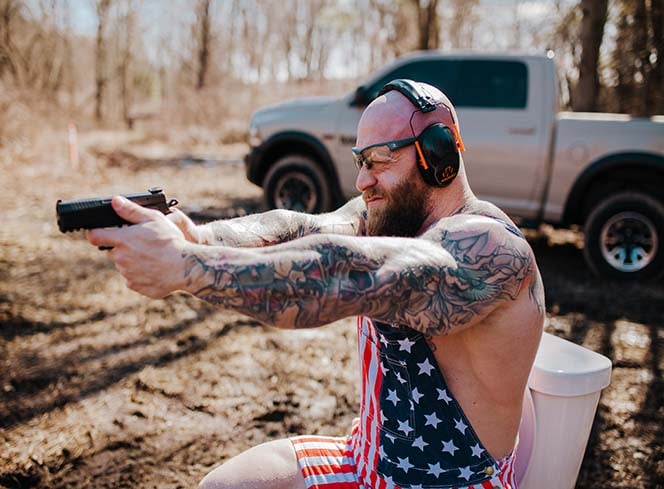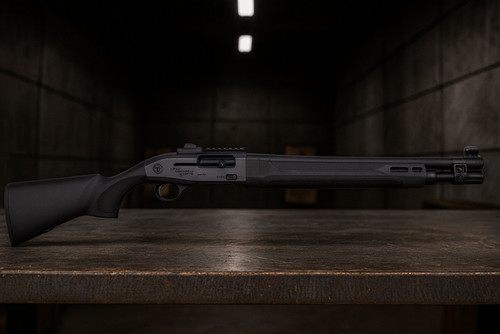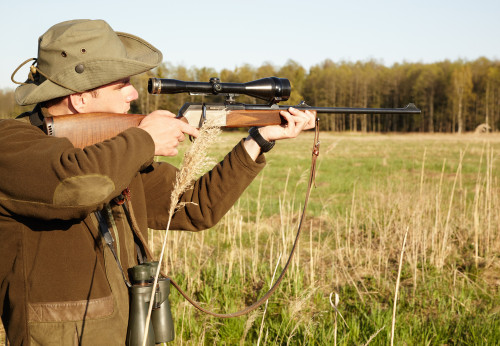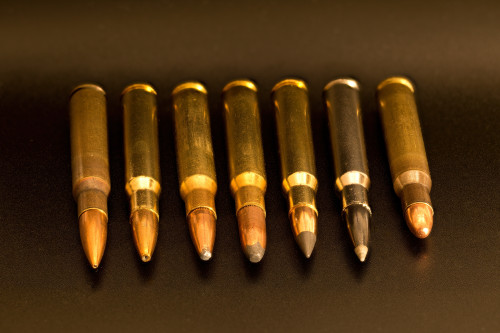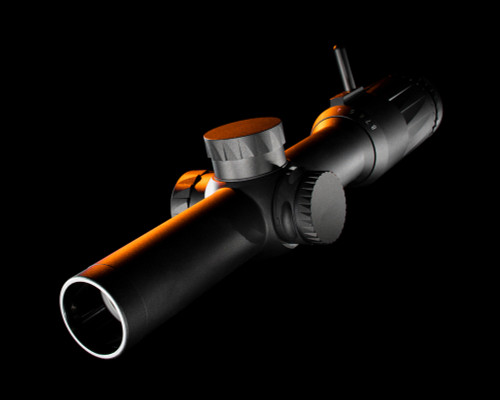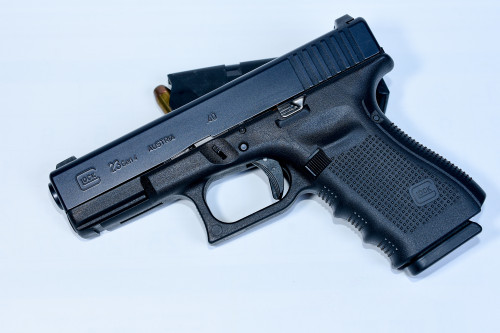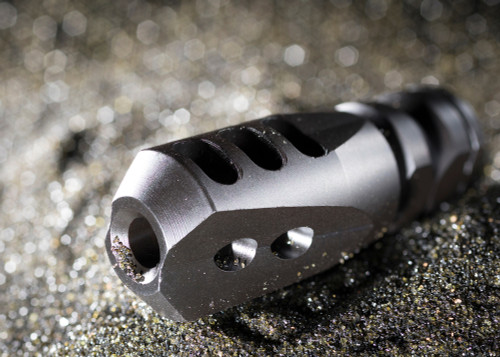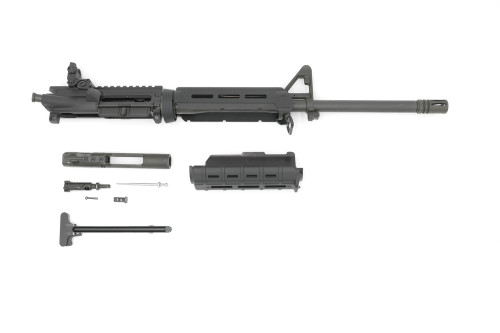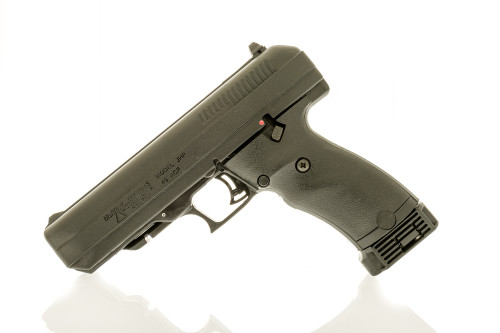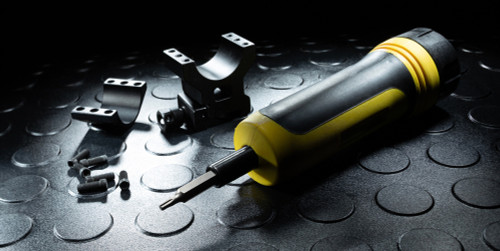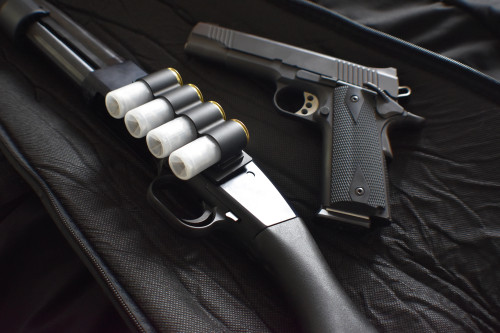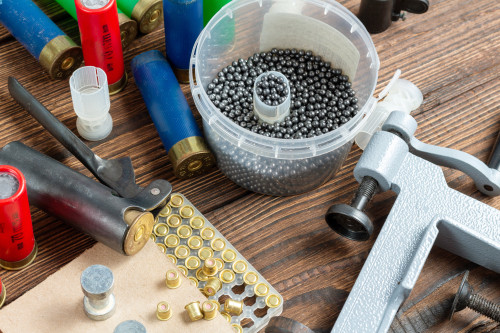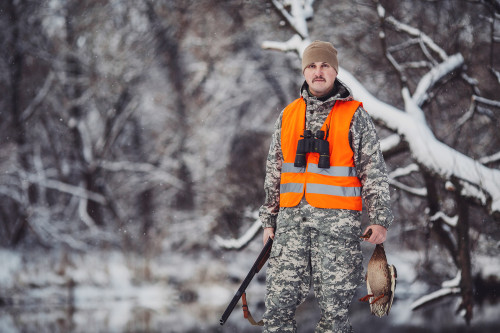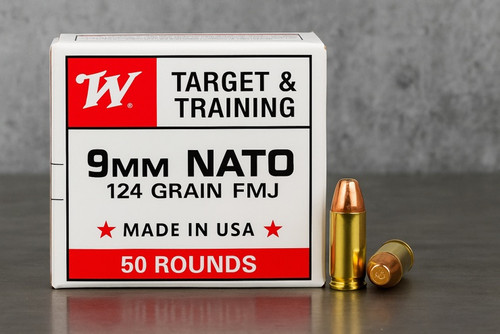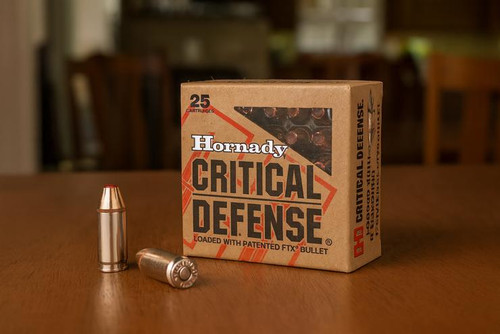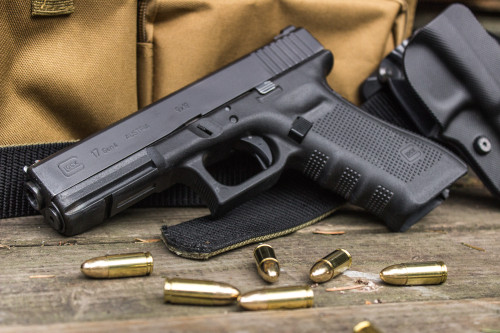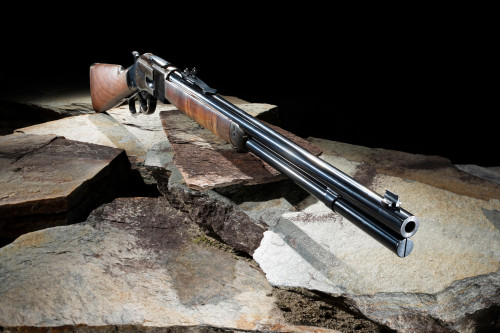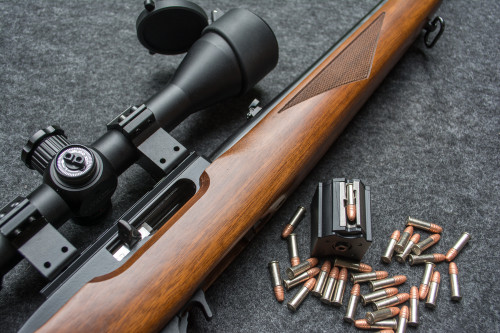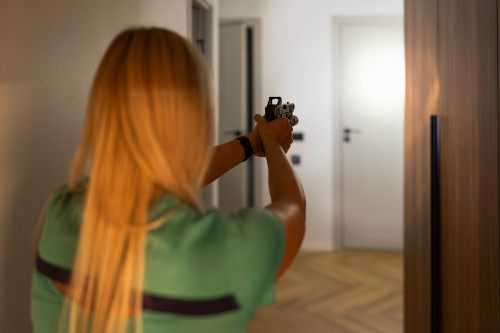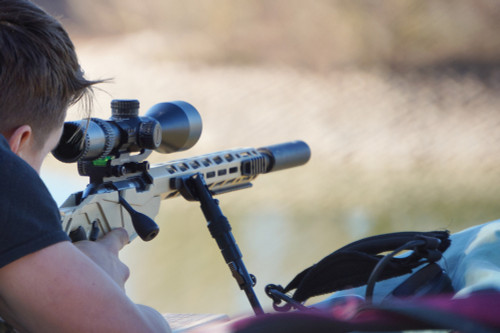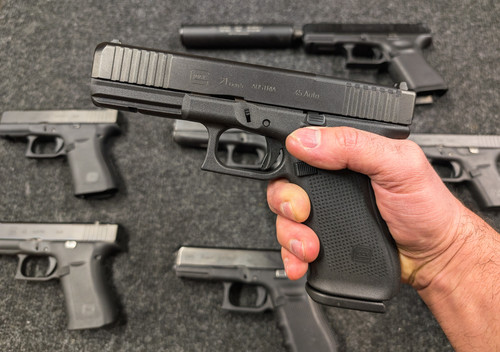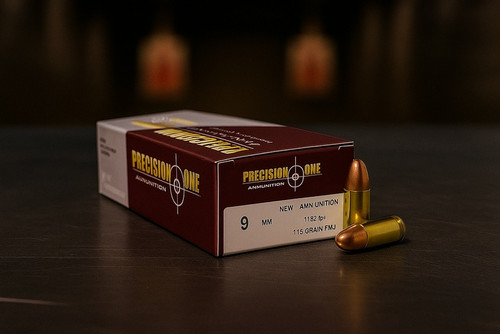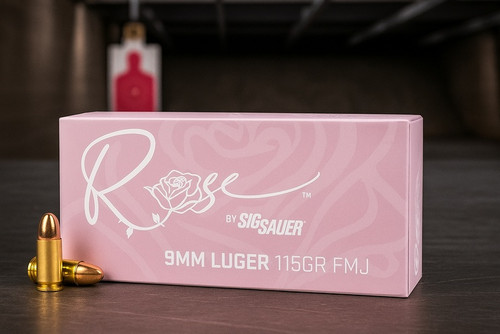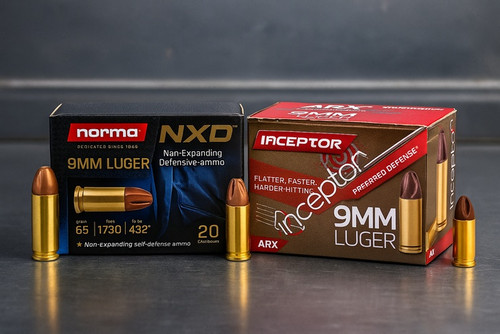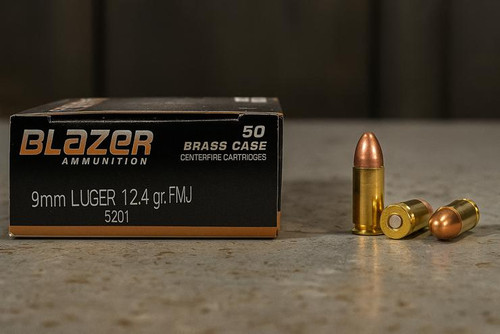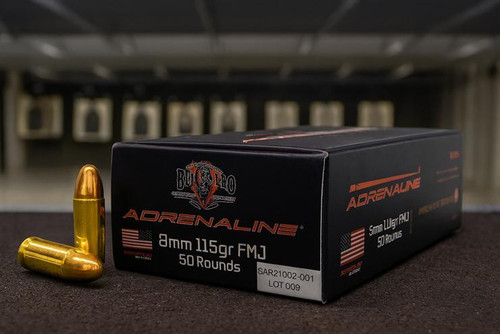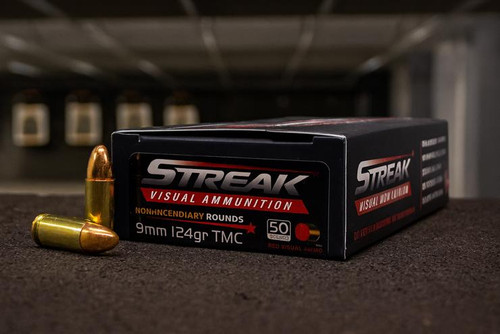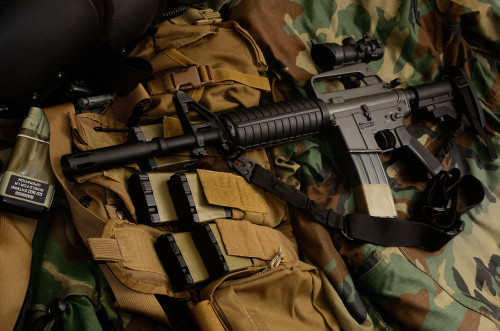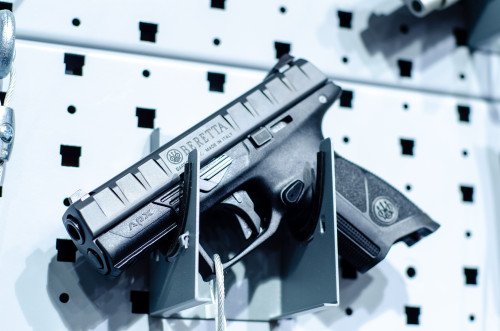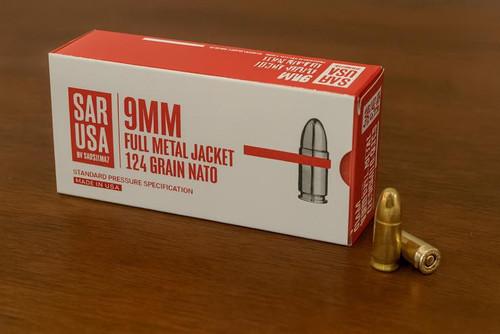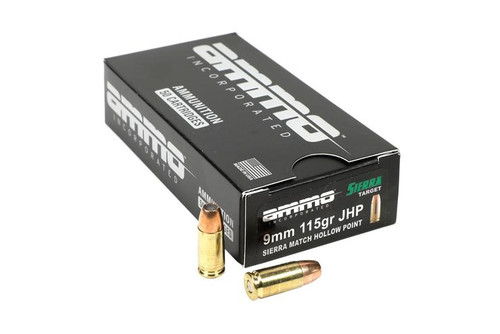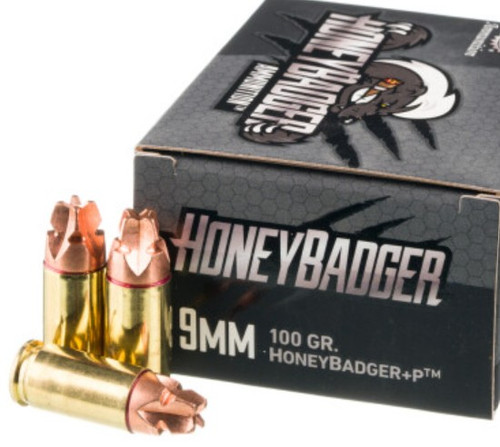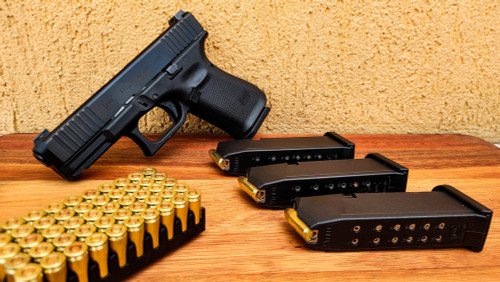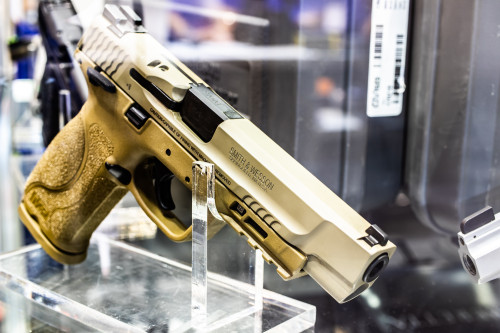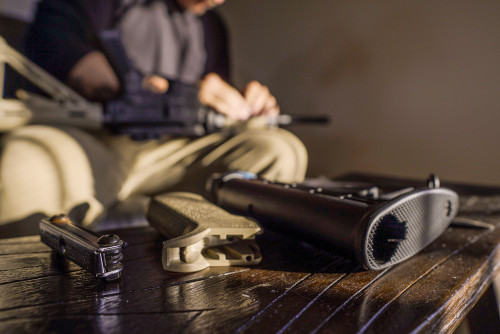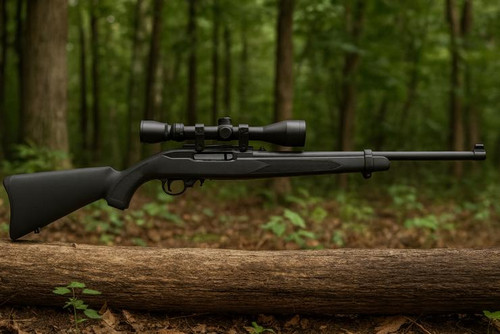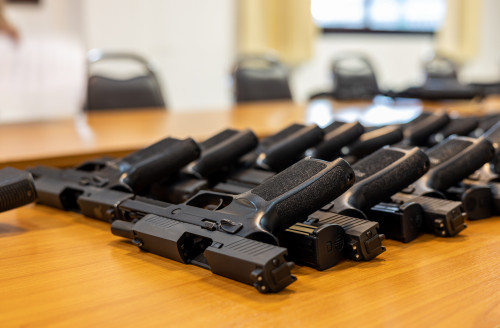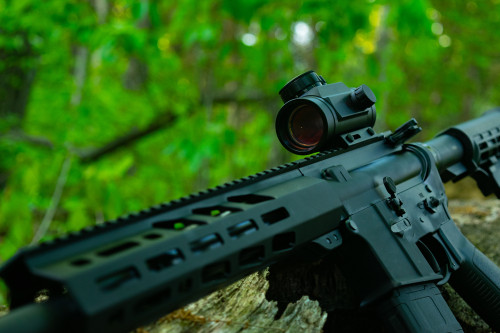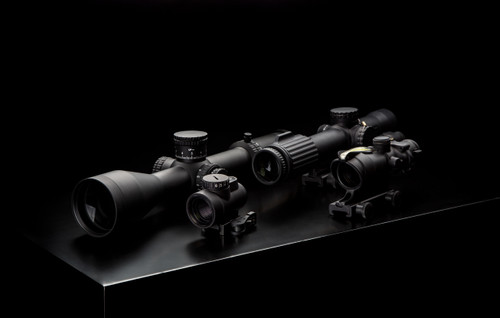This is Part 2 — now we move beyond the small-bore rounds and into the meat of the rifle world: intermediate and big-bore calibers. These are the cartridges built to do heavy lifting — dropping big game, reaching out to longer ranges, and powering the battle and sniper rifles that shaped modern ballistics.
In this installment you’ll find straightforward specs, sensible pros & cons, real-world uses, and solid ammo suggestions for cartridges that span brush-country classics (.30-30), do-it-all standards (.308 / .30-06, .270), modern long-range favorites (6.5 Creedmoor, 6mm Creedmoor), and the extreme-end powerhouses (.338 Lapua, .50 BMG).
Read on if you want the short, practical takeaways to help you choose the right round for your hunting terrain, competition needs, or long-range ambitions — without the fluff.
Now let’s check out the intermediate and big rifle calibers. These are the real workhorses. They can drop big game, punch targets at long range, and they’ve served in military and sniper rifles for years.
.30-30 Winchester – The Deer Hunting Legend
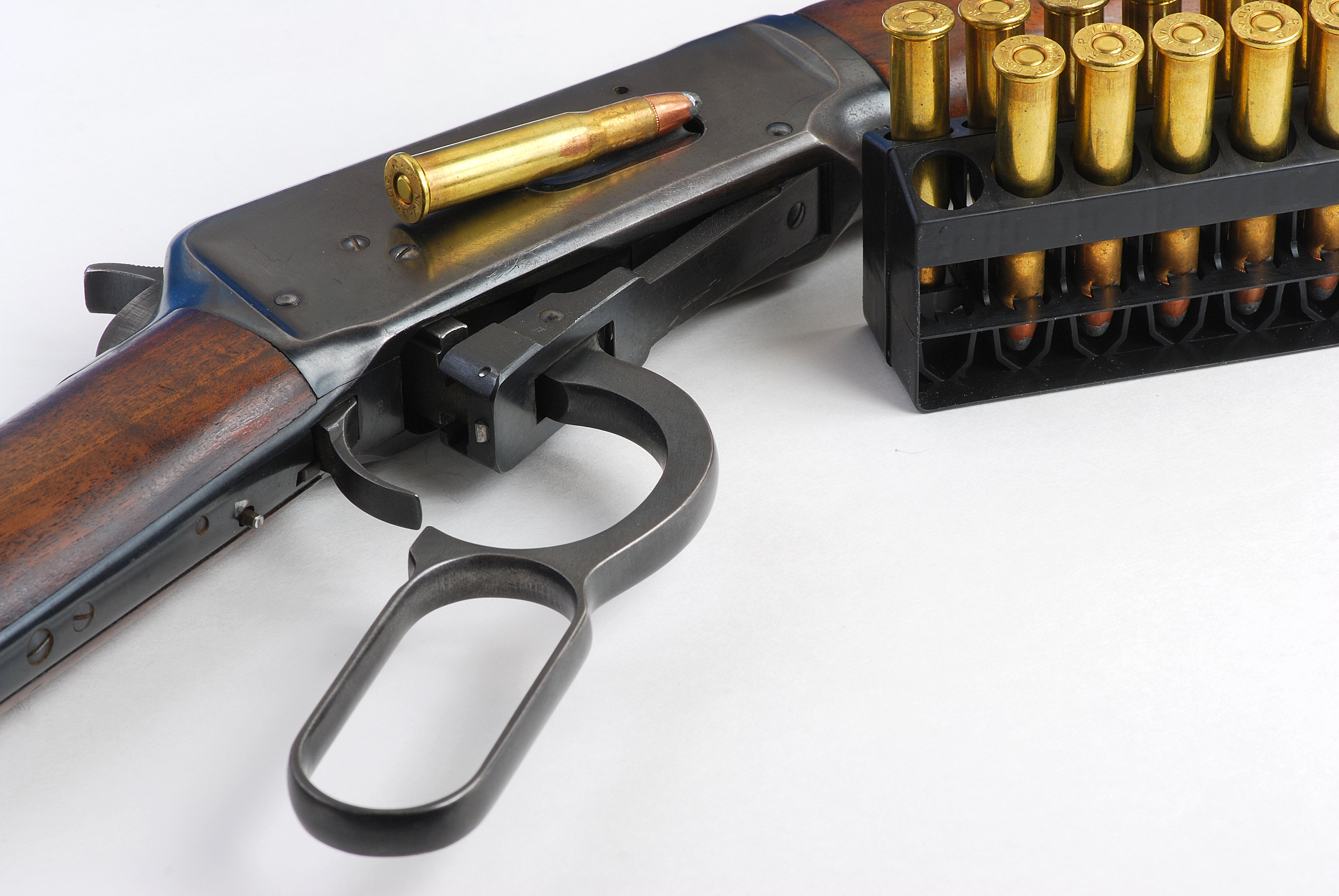
Specs
- Bullet Weight: 110–170 gr
- Velocity: 2,200–2,700 fps
- Energy: 1,800 ft/lbs
- Price per Round: $1.00
Launched in 1895, the .30-30 Winchester is one of the oldest smokeless powder rounds still used today. Known best in lever-action rifles, it’s the classic American deer cartridge. One of the most popular deer cartridges in U.S. history, believed by many to have taken more deer than any other round.
Pros & Cons
The .30-30 shines in the deer woods. Ammo is easy to find at almost any shop, and recoil is mild enough for most hunters. It works well inside 200 yards.
The downside is that its bullet path drops fast at longer ranges, so it’s not ideal for open fields or precision shooting.
Best Uses
Perfect for hunting deer in brush or wooded areas where shots stay short. It’s also tied closely to lever-action rifles, offering a mix of heritage, power, and ease of use. Hunters who like tradition still trust this round.
Recommended Ammo
Winchester Super-X 150-grain loads have been the go-to choice for decades. They expand well and hit hard on deer. Hornady LeverEvolution gives you flatter shots and better energy with safe, flexible-tipped bullets made for lever guns.
Recoil & Handling
Recoil is moderate and easy for most hunters to manage. Lever guns in .30-30 are quick to shoulder and fast to cycle, which helps when a second shot is needed in thick woods.
6mm Creedmoor – Precision Competition Round
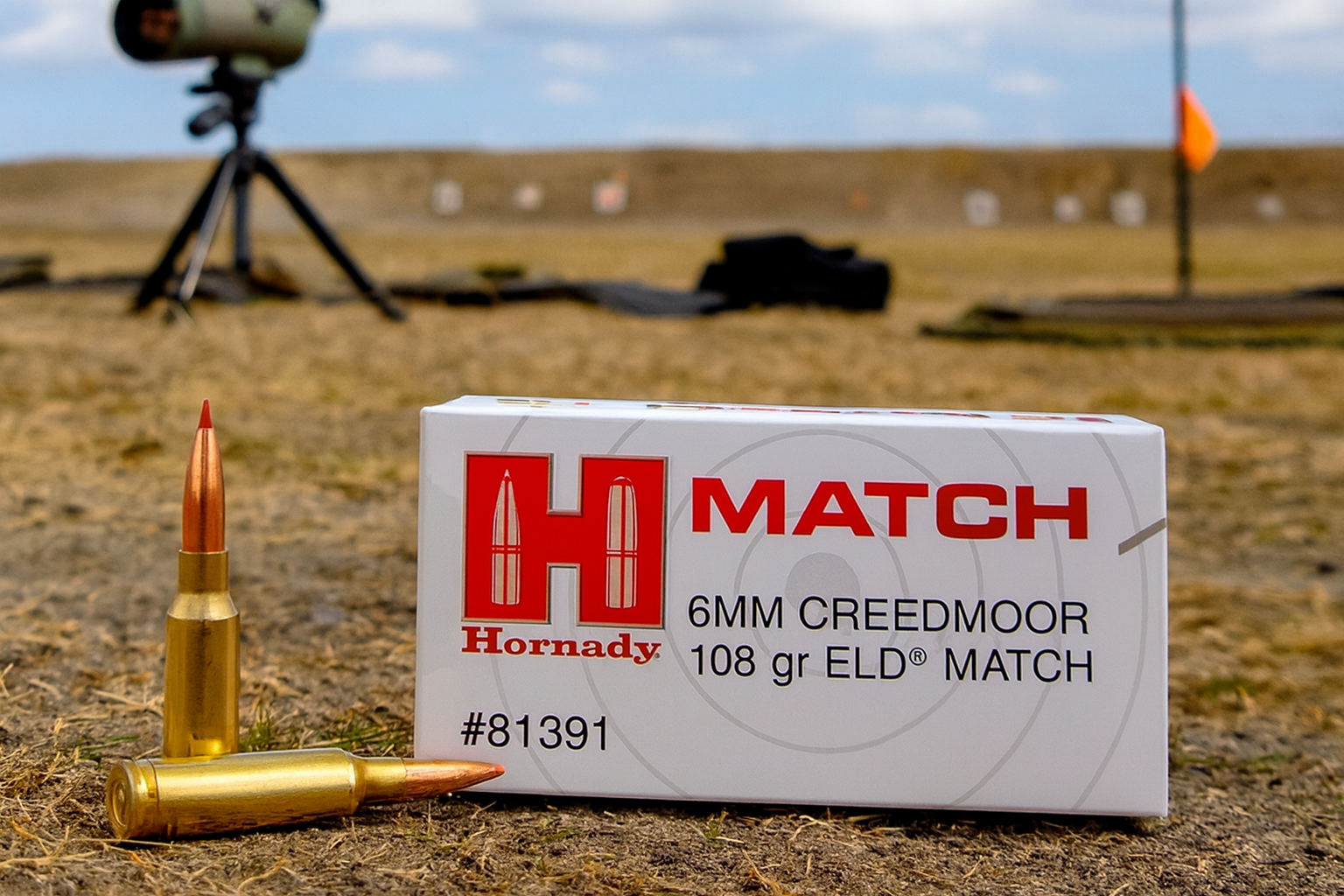
Specs
- Bullet Weight: 70–115 gr
- Velocity: 2,950–3,150 fps (realistic factory range; 3,500 fps is excessive)
- Energy: 2,000 ft/lbs
- Price per Round: $1.35 (typical; specialty calibers often run $1.25–$1.75 in practice)
The 6mm Creedmoor is a necked-down version of the 6.5 Creedmoor. It’s built for speed and efficiency with flat bullet paths. It quickly became a top pick for competitive shooters.
Pros & Cons
This round delivers excellent accuracy with very flat flight, which is why competition shooters love it. It kicks less than 6.5 Creedmoor but keeps much of the same ability to fight wind.
On the downside, barrels wear faster due to the higher velocity. Ammo is also harder to find compared to older rounds.
Best Uses
Made for Precision Rifle Series matches and long-range targets past 600 yards. It’s also being used more for hunting deer and antelope at a distance. The light recoil and accuracy give shooters a real edge.
Recommended Ammo
Hornady Match with ELD bullets is the gold standard here. The Federal Gold Medal with Sierra MatchKing is another strong choice for serious long-range shooters.
Recoil & Handling
Recoil is light to moderate and easy on the shoulder, even in long sessions. Because recoil and blast are mild, shooters can often see their hits through the scope — a huge advantage in competition.
.243 Winchester – Varmint & Medium Game
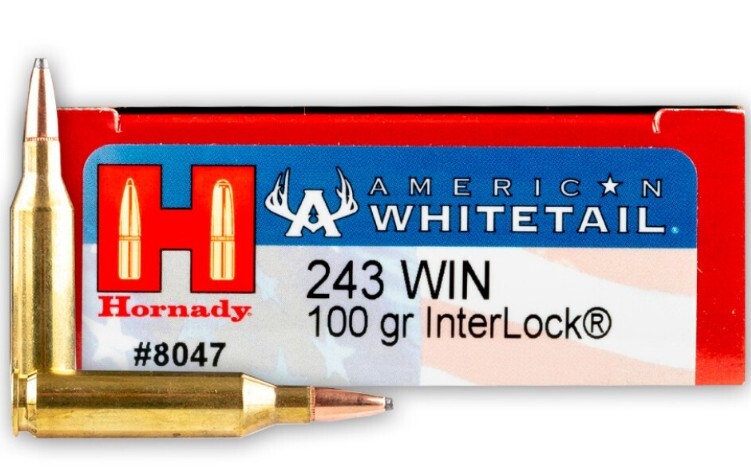
Specs
- Bullet Weight: 58–105 gr
- Velocity: 2,800–3,500 fps (typical factory loads; 3,900 fps only with ultra-light varmint specialty loads)
- Energy: 1,950 ft/lbs
- Price per Round: $0.80
Introduced in 1955, the .243 Winchester is basically a necked-down .308 case. It’s flat shooting and accurate and for this reason it is ideal for varmints and deer.
Pros & Cons
The .243 offers light recoil but still has enough power for deer. It’s accurate, flat, and fun to shoot. Cons include quicker barrel wear with super light, high-speed bullets, and it’s slowly being edged out in competitions by newer rounds.
Best Uses
Great for varmints like coyotes and prairie dogs with lighter bullets. With heavier bullets, it works well for deer hunting, especially for new or recoil-sensitive hunters.
Recommended Ammo
Hornady American Whitetail with 100-grain Interlock bullets works well on deer. Federal Fusion is a solid and affordable option for varmint shooting when volume matters.
Recoil & Handling
Recoil is very light. That makes it perfect for younger hunters or anyone who doesn’t like heavy kicks. Easy shooting means more practice — and better accuracy in the field.
.45-70 Government – Big-Bore Lever Action
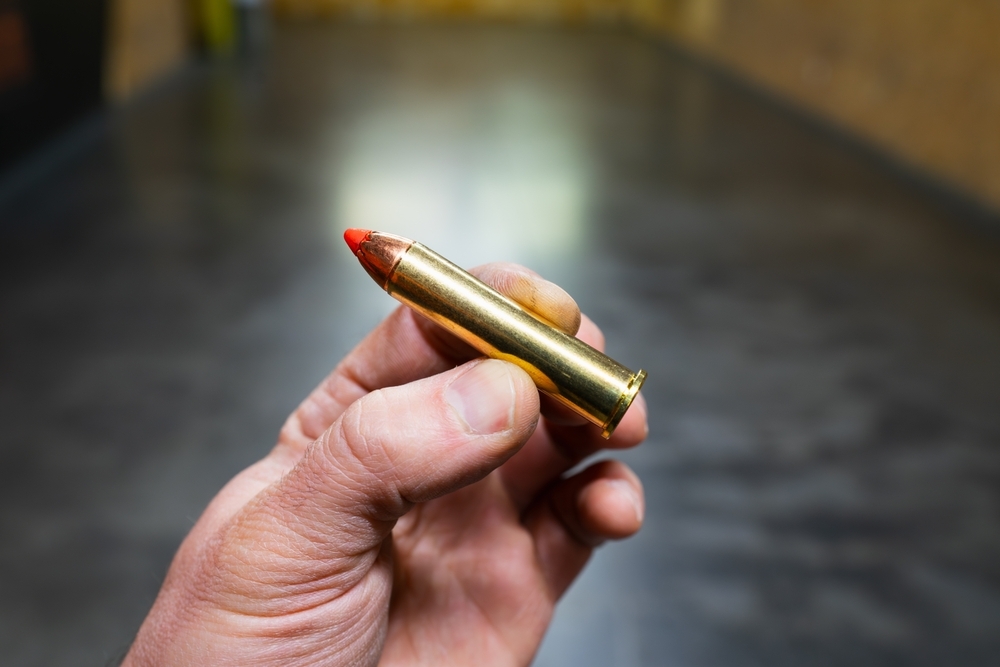
Specs
- Bullet Weight: 250–500 gr
- Velocity: 1,250–2,000 fps
- Energy: 1,200–3,500 ft/lbs
- Price per Round: $1.60
Developed in 1873 at Springfield Armory, the .45-70 has been around for over 150 years. Once a military round, it’s now popular with lever-gun fans and hunters chasing huge game.
Pros & Cons
This cartridge hits like a hammer. It can take down the largest game in North America. A wide variety of loads exist — from light cowboy loads to heavy big-game rounds.
Downsides: full-power recoil is heavy, the bullet drops a lot past 150 yards, and ammo costs more than modern cartridges.
Best Uses
Great for close-range hunting of bear, moose, and bison. Also popular with lever-action shooters and cowboy-action fans who enjoy the history and rifles like the Marlin 1895.
Recommended Ammo
Hornady LeverEvolution breathes new life into this old round with modern bullets made safe for lever mags. For max power, Remington’s 405-grain load mirrors the original and packs deep penetration.
Recoil & Handling
Full loads kick hard, especially in light rifles. The push is heavy but steady, not a sharp snap. Reduced loads are available for practice or smaller games.
.308 Winchester / 7.62 NATO – The All-Rounder
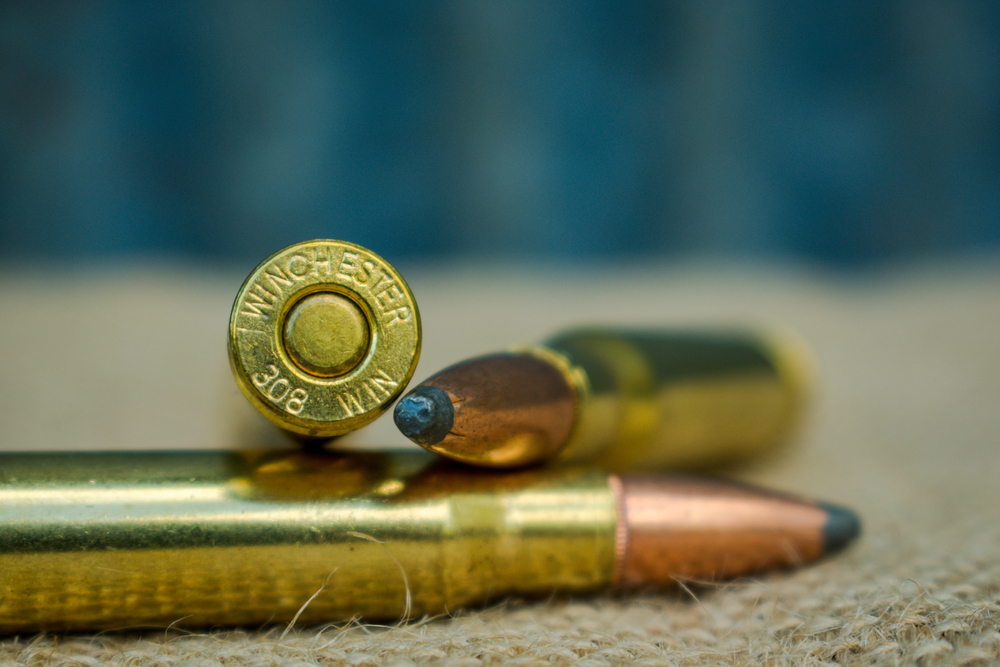
Specs
- Bullet Weight: 110–220 gr
- Velocity: 2,500–3,100 fps
- Energy: 2,600 ft/lbs (typical max — lighter bullets are closer to 1,800–2,300 ft/lbs)
- Price per Round: $0.80–$1.00 (closer to current .308 market pricing)
Built for the military, the .308 and 7.62 NATO became two of the most common calibers worldwide. Used for hunting, sniping, and battle rifles.
Pros & Cons
The .308 is flexible with tons of ammo options. Ammo is everywhere and usually priced fair. It works well in bolt guns and semi-autos. Downsides: it kicks more than smaller rounds like 5.56 and adds weight when used in semi-auto rifles.
Best Uses
It’s a solid choice for hunting deer, elk, and similar game at normal ranges. It’s also a go-to for precision rifles under 800 yards and is trusted in sniper and marksman rifles worldwide.
Recommended Ammo
Federal Gold Medal Match with Sierra MatchKing bullets is the long-time accuracy standard. For hunting, Winchester Power-Point is affordable and effective.
Recoil & Handling
Recoil is noticeable but not bad. Bolt guns in the 7-8 lb range handle it fine, and semi-autos like the AR-10 soak up even more. This balance of power and shootability explains its lasting popularity.
6.5 Creedmoor – The Modern Long-Range King
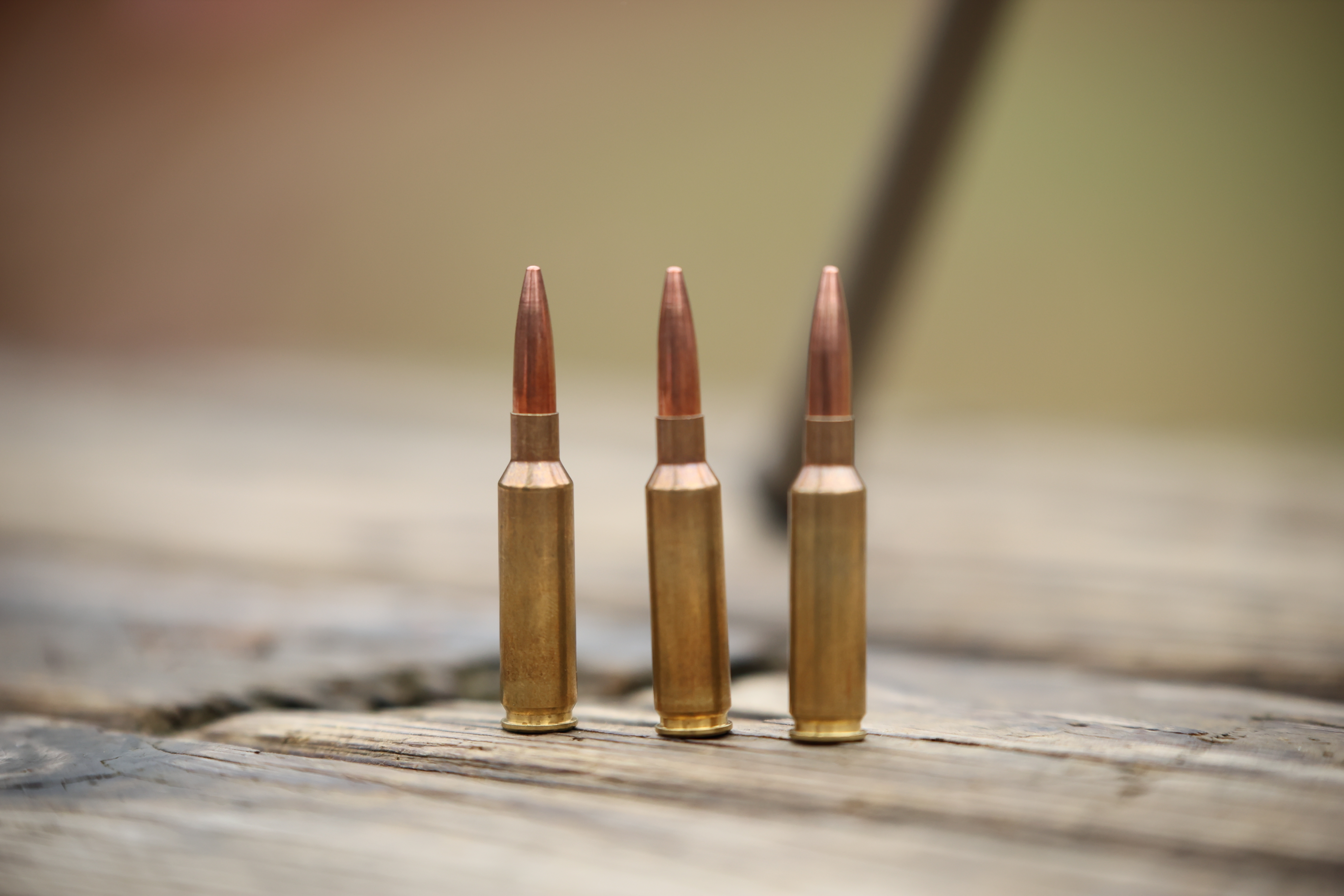
Specs
- Bullet Weight: 90–147 gr
- Velocity: 2,700–3,300 fps
- Energy: 2,300 ft/lbs
- Price per Round: $0.85
Born in 2007, the 6.5 Creedmoor flipped the script for long-range shooting. Hunters and competition shooters love it for its reach and accuracy.
Pros & Cons
It delivers long-range performance with much less kick than magnums. It stays supersonic past 1,300 yards, which is a huge plus. Ammo is widely available. The drawback is that barrels wear out faster than slow rounds, but it’s still better than many high-speed calibers.
Best Uses
Perfect for long-range competitions thanks to its flat flight and low wind drift. Hunters also use it for deer and elk at extended ranges, where bullet design and energy shine. The softer recoil makes it easy to train with.
Recommended Ammo
Hornady ELD Match is the go-to for long-range targets. For hunting, Federal Fusion expands well and hits hard on medium game.
Recoil & Handling
Recoil is softer than .308 and has less muzzle blast. That makes it popular with precision shooters who need to spot impacts. Comfortable enough for long training days without much fatigue.
7.62x54mmR – Mosin-Nagant Classic
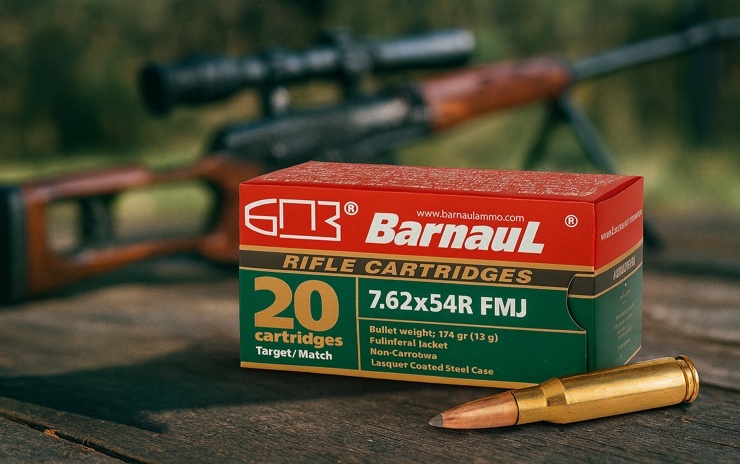
Specs
- Bullet Weight: 150–181 gr
- Velocity: 2,500–2,800 fps
- Energy: 2,600 ft/lbs
- Price per Round: $0.65
Dating back to the 1890s, this Russian cartridge powered the Mosin-Nagant and still sees military use today in PKM machine guns and Dragunov rifles.
Pros & Cons
The 7.62x54mmR delivers impressive power comparable to the .30-06 Springfield, with a rich military heritage spanning from Tsarist Russia through the Soviet era to modern conflicts. Until recently, surplus ammunition and rifles were quite affordable compared to Western counterparts.
The main disadvantages include increasingly scarce surplus supplies, generally heavier recoil (especially in lightweight Mosin rifles), and rimmed case design that can complicate feeding in some firearms.
Best Uses
This historic cartridge appeals strongly to military collectors and enthusiasts of historical firearms, particularly the iconic Mosin-Nagant rifles that served through both World Wars. It's also fully capable of taking big game animals at reasonable hunting distances, though most hunting-specific loads are relatively recent developments compared to dedicated hunting cartridges.
Recommended Ammo
Wolf and Barnaul ammunition provide economical options for target practice with steel cases, typically featuring simple full metal jacket bullets. For better accuracy or hunting purposes, PPU (Prvi Partizan) offers brass-cased ammunition with various bullet options that generally provide superior performance.
Recoil & Handling
Sharp recoil, especially in surplus Mosin rifles with steel buttplates. While 2,600 ft/lbs is a useful typical maximum, lighter bullets often produce lower energy ( 1,800–2,300 ft/lbs), so treat 2,600 ft/lbs as a typical max rather than a fixed figure. . The straight-wrist stocks and steel buttplates of these historic rifles can make extended shooting sessions uncomfortable. Modern sporting rifles chambered for this cartridge typically offer more shooter-friendly ergonomics and recoil management.
.270 Winchester – Balanced & Popular
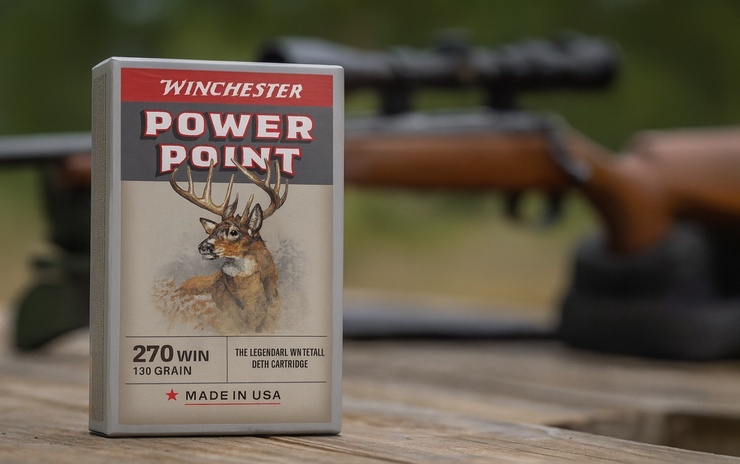
Specs
- Bullet Weight: 90–150 gr
- Velocity: 2,850–3,200
- Energy: 2,700 ft/lbs
- Price per Round: $1.00
Released in 1925, the .270 Win quickly became a favorite for deer hunting. Flat shooting and powerful, it remains a staple for hunters worldwide.
Pros & Cons
The .270 Winchester strikes an excellent balance between flat trajectory, hitting power, and manageable recoil. It's proven itself on countless hunting fields for nearly a century, with ammunition available virtually everywhere sporting goods are sold. The cartridge delivers enough power for most North American games without punishing recoil.
Its main limitation today is simply being overshadowed by newer offerings like the 6.5 Creedmoor in terms of market attention.
Best Uses
This time-tested cartridge truly shines when hunting deer and similar-sized game, particularly in open country where its flat trajectory allows for longer shots without significant holdover. It's also quite capable on larger animals like elk when loaded with appropriate bullets. The .270's moderate recoil and excellent ballistics make it an outstanding choice for all-around big game hunting across varied terrain
Recommended Ammo
Winchester Power-Point ammunition has been taking game with the .270 for generations. It offers reliable expansion and penetration at a reasonable price point. For hunters seeking maximum performance, Hornady Superformance pushes bullets at higher velocities for even flatter trajectories and increased energy delivery on target.
Recoil & Handling
The .270 Winchester produces moderate recoil similar to the .308 Winchester, despite its superior ballistic performance. Most adult shooters handle it comfortably in standard hunting rifles weighing 7-8 pounds. The recoil is sharp enough to command respect but not so severe that it causes flinching or makes practice sessions unpleasant for most shooters.
.30-06 Springfield – The American Classic
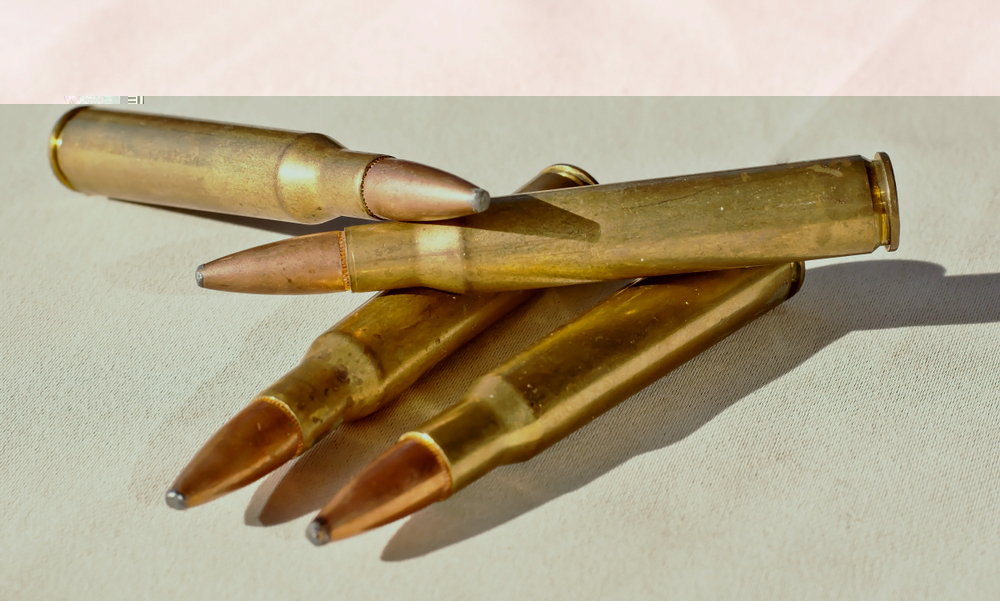
Specs
- Bullet Weight: 110–220 gr
- Velocity: 2,500–3,400 fps
- Energy: 2,500–3,000 ft/lbs
- Price per Round: $0.85
Adopted in 1906 as the U.S. military round, the .30-06 served for half a century and remains one of the most adaptable hunting rounds in existence.
Pros & Cons
The .30-06 Springfield boasts unmatched versatility with bullet weights ranging from 110 to 220 grains. It is suitable for everything from varmints to moose. Its legendary history and proven track record give hunters tremendous confidence. Ammunition is available worldwide, even in remote locations.
The main drawbacks include somewhat sharper recoil than newer cartridges of similar power and the need for longer action rifles, which add weight and bulk.
Best Uses
This American classic excels as an all-around big game hunting cartridge capable of ethically taking any North American game animal. It's particularly well-suited for larger species like elk, moose, and bear when loaded with heavier bullets. The .30-06 also attracts military history enthusiasts who appreciate its service in both World Wars and the conflicts in Korea and the early days of Vietnam.
Recommended Ammo
Federal Power-Shok ammunition offers consistent performance at a reasonable price point. For this reason it has been a staple among .30-06 hunters for decades. Hornady American Whitetail provides excellent accuracy and terminal performance with Interlock bullets that control expansion for deep penetration on larger game animals.
Recoil & Handling
The .30-06 Springfield generates substantial recoil, especially with heavier bullet loadings. However, most hunting rifles chambered for it are built with appropriate weight and stock design to help manage the impulse. The recoil is stout enough that smaller or recoil-sensitive shooters may find it uncomfortable for extended practice, but proper technique and rifle fit can mitigate much of this concern.
.338 Lapua Magnum – Extreme Range Sniper Round
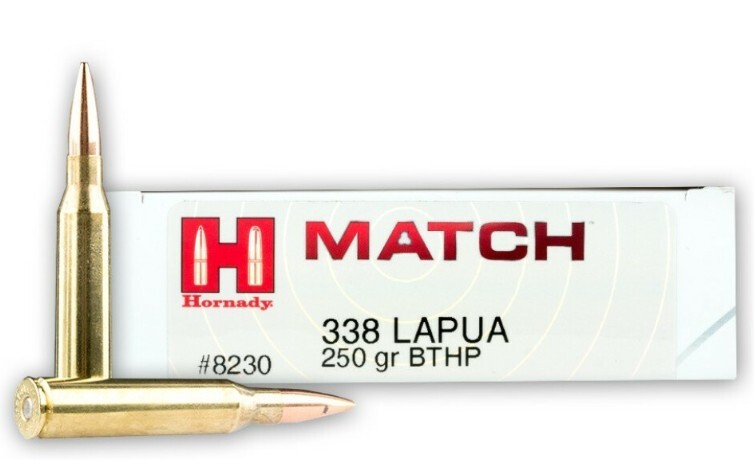
Specs
- Bullet Weight: 200–300 gr
- Velocity: 2,650–2,950 fps
- Energy: 5,100 ft/lbs
- Price per Round: $3.00
Developed in the 1980s for long-range sniping, the .338 Lapua has set records for sniper kills over 2,700 yards.
Pros & Cons
The .338 Lapua Magnum delivers extraordinary long-range capability with heavy bullets that resist wind drift and maintain supersonic flight well beyond 1,500 yards. Its military adoption has cemented its reputation for extreme precision at distances that smaller calibers cannot reliably reach.
The significant drawbacks include very expensive ammunition, substantial recoil that requires proper technique, and heavy rifles typically weighing 12+ pounds to manage the forces involved.
Best Uses
This specialized cartridge excels in extreme long-range shooting scenarios, particularly military and police sniping where shots beyond 1,000 yards may be necessary. It's also used by civilian precision shooters pushing the boundaries of long-range marksmanship. Some hunters employ it for large game at extended distances, though its power is generally unnecessary for most hunting applications.
Recommended Ammo
Lapua's own Scenar ammunition represents the gold standard for this caliber. It features meticulously manufactured components for maximum consistency at extreme ranges. Hornady Match with A-MAX or ELD bullets offers another premium option focused on accuracy and aerodynamic efficiency for serious long-range shooters.
Recoil & Handling
The .338 Lapua Magnum produces very heavy recoil that demands proper technique and substantial rifle weight to manage effectively. Most rifles chambered for this cartridge feature muzzle brakes and weigh 12-15 pounds to help tame the forces involved. Despite these measures, the recoil remains substantial enough that extended practice sessions can be fatiguing even for experienced shooters.
.50 BMG – The Heavyweight Champion
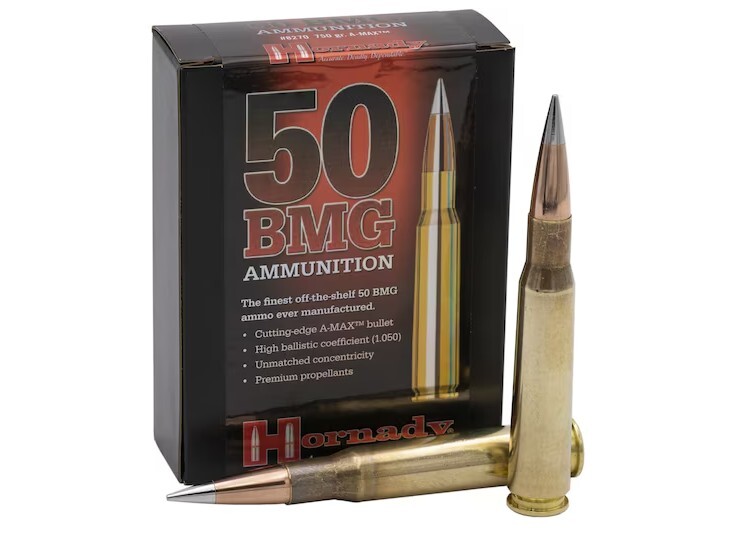
Specs
- Bullet Weight: 647–800 gr
- Velocity: 2,800–3,000 fps
- Energy: 13,000–15,000 ft/lbs
- Price per Round: $3.00–$5.00
Designed for the Browning M2 machine gun in 1918, the .50 BMG is still used today as an anti-materiel round. Capable of extreme range, massive penetration, and unmatched power.
Pros & Cons
The .50 BMG delivers truly enormous power that has enabled some of the longest confirmed sniper kills in military history by exceeding 2,000 yards. Its military heritage and sheer impressiveness give it iconic status among firearms enthusiasts.
The overwhelming drawbacks include extremely expensive ammunition, enormous rifles often weighing 25-35 pounds, serious recoil even with substantial muzzle brakes, and restrictions on its use at many shooting ranges due to safety concerns.
Best Uses
This massive cartridge serves primarily in anti-materiel roles where its ability to penetrate light armor and barriers is valuable. In civilian hands, it's mainly used for extreme long-range shooting by enthusiasts with specialized equipment and adequate facilities. Some competitions specifically for .50 BMG rifles exist, but they remain niche events compared to mainstream shooting sports.
Recommended Ammo
Hornady A-MAX ammunition offers match-grade accuracy for precision applications with this massive cartridge. For military training or general range use, Barrett M33 Ball provides reliable performance with full metal jacket bullets at a relatively more affordable price point (though still expensive compared to smaller calibers).
Recoil & Handling
The .50 BMG generates enormous recoil that necessitates extremely heavy rifles, typically 25-35 pounds, with substantial muzzle brakes to manage the forces involved. Even with these features, the recoil remains significant enough that proper technique is essential to shoot it effectively. Most .50 BMG rifles are fired from bipods or other supports due to their weight and recoil characteristics. This makes them impractical for any application requiring mobility.
Specs Comparison Table
| Caliber | Bullet Weight (gr) | Velocity (fps) | Energy (ft-lbs) | Typical Use |
|---|---|---|---|---|
| .22 LR | 30–40 | 1,200–1,700 | 125–200 | Training, plinking, small game |
| .17 HMR | 17–20 | 2,350–2,650 | ~250 | Varmint hunting |
| 5.7x28mm | 23–40 | 2,300–2,800 | 380–500 | Defense, carbines |
| .30 Carbine | 110 | ~2,000 | ~970 | Historical rifles |
| .300 BLK | 90–220 | 1,000–2,500 | 500–1,350 | AR carbines, suppressed |
| 7.62x39mm | 123 | 2,400 | ~1,600 | AK rifles, hunting |
| .224 Valkyrie | 60–90 | 2,600–3,500 | ~1,500 | AR long-range |
| 5.56 / .223 | 40–77 | 2,600–3,200 | ~1,300 | ARs, varmint, defense |
| 6.8 SPC | 85–120 | 2,450–3,100 | ~1,700 | Hunting medium game |
| 6.5 Grendel | 90–130 | 2,500–2,900 | ~1,800 | Long-range AR |
| .458 SOCOM | 250–600 | 1,000–2,200 | 1,300–2,500 | Big-game AR |
| .30-30 Win | 110–170 | 2,200–2,700 | ~1,800 | Deer hunting |
| 6mm Creedmoor | 70–115 | 3,000–3,500 | ~2,000 | Competition, long-range |
| .243 Win | 58–105 | 2,900–3,900 | ~1,950 | Varmints, deer |
| .45-70 Gov't | 250–500 | 1,250–2,000 | 1,200–3,500 | Big game, lever guns |
| .308 Win / 7.62 NATO | 110–220 | 2,500–3,100 | ~2,600 | Hunting, sniping |
| 6.5 Creedmoor | 90–147 | 2,700–3,300 | ~2,300 | Long-range, hunting |
| 7.62x54mmR | 150–181 | 2,500–2,800 | ~2,600 | Mosins, DMRs |
| .270 Win | 90–150 | 2,850–3,600 | ~2,700 | Deer hunting |
| .30-06 Springfield | 110–220 | 2,500–3,400 | ~2,800–3,000 | All-around hunting |
| .338 Lapua | 200–300 | 2,800–3,400 | ~5,100 | Extreme long-range |
| .50 BMG | 647–800 | 2,800–3,000 | 13,000–15,000 | Anti-materiel, extreme sniping |
How To Choose the Right Caliber
You should not pick the "biggest" or "fastest" round. You should know how to balance your purpose, comfort, and availability. Experts in the military, law enforcement, training, and hunting communities often recommend evaluating four main factors before making a decision.
Key Factors to Consider
When selecting a caliber, consider these essentials:
Recoil Tolerance:
Beginners may prefer low-recoil calibers like .22LR, .223/5.56, or 6.5 Creedmoor. Heavy recoil from .338 Lapua or .50 BMG can quickly discourage new shooters.
Intended Use:
- Target & Training: .22LR, .223/5.56
- Hunting Deer: .243 Win, .270 Win, .308 Win
- Big Game: .30-06, .45-70, .338 Lapua
- Defense: .300 BLK, 7.62x39, 5.56 NATO
Ammo Availability:
Common rounds like 5.56, .308, and .30-06 are easy to find worldwide. Niche calibers like .224 Valkyrie or 6.8 SPC may be harder to source.
Rifle Type:
Some calibers are optimized for specific platforms. Example: 5.56 for AR-15, 7.62x39 for AK-47, .30-30 for lever guns.
Military & Law Enforcement Insights
Military adoption heavily influences caliber popularity.
5.56 NATO (.223 Remington):
Chosen for the AR-15/M16 due to light recoil, lightweight ammo, and controllable automatic fire. Its wounding capability, high velocity, and NATO standardization made it the world's most common military round.
7.62 NATO (.308 Winchester):
Still widely used in designated marksman rifles and machine guns. Military experts note its longer effective range and greater penetration compared to 5.56.
.338 Lapua Magnum:
Developed specifically for snipers, used to make confirmed kills beyond 2,700 yards. Demonstrates how military precision shapes caliber innovation.
Law enforcement agencies also favor intermediate calibers: many SWAT units use 5.56 carbines for urban operations.
According to research from firearms experts, the .22LR remains the most popular rifle round due to its low cost and minimal recoil.
.300 Blackout is also gaining traction for suppressed entry rifles.
Trainer Recommendations
Professional firearms trainers emphasize matching the caliber to the shooter's skill level.
For Beginners:
- cStart with .22LR as they have a minimal recoil, cheap, ideal for learning fundamentals.
- Progress to .223/5.56 as they introduce centerfire recoil without being overwhelming.
For Intermediate Shooters:
- .243 Win or 6.5 Creedmoor is great for extending effective range without strong recoil.
For Advanced Shooters:
- .308 Win, .30-06, and beyond can teach recoil management, long-range shooting, and big-game hunting.
Trainers caution against starting with "too much gun," since excessive recoil can build bad habits like flinching.
Hunting Recommendations
- Hunters choose calibers based on game size, distance, and terrain.
- Small Game (rabbits, squirrels, varmints): .22LR, .17 HMR, .22 WMR
- Medium Game (deer, hogs, coyotes): .243 Win, .270 Win, 6.5 Creedmoor, .308 Win
- Large Game (elk, bear, moose): .30-06, .300 Win Mag, .45-70 Government
- Extreme / Dangerous Game (Africa, Alaska): .338 Lapua Magnum, .375 H&H, .50 BMG (specialized use)
Hunters stress ethical kills — choosing a caliber with enough energy and penetration helps humane results.
Final Thoughts
Rifle calibers can feel endless, but breaking them down by size and use makes them easier to grasp. From tiny .22LR to massive .50 BMG, every caliber has a job. Each one shines in different settings.
There’s no single “best” caliber. The right one depends on your goals, skill level, and budget. A deer hunter needs something different than a target shooter. And home defense brings another set of needs.
If you’re just starting out, stick with something light. The .22LR or .223/5.56 are perfect for learning the basics without heavy recoil. Once you’re comfortable, you can move up to larger calibers with confidence.
The most important part is practice. Shoot often and get consistent. A well-aimed shot with a small caliber always beats a missed shot with a big one.
That wraps up our tour of intermediate and big rifle calibers. From brush-friendly lever-action workhorses to precision and extreme-range specialists, each cartridge carries tradeoffs in trajectory, recoil, cost, and purpose — and the “best” choice always depends on the job you need it to do. If you hunt in thick cover, prioritize stopping power and quick follow-up shots; if you shoot long range, favor flat trajectories, BC, and consistent factory match loads; if you want versatility, choose a proven all-rounder and learn its limits.
If you missed Part 1 (small and intermediate-rifle rounds), go back and read it for the full context — together the two posts will give you a clear playbook for matching cartridges to roles.
Frequently Asked Questions (FAQs)
What rifle caliber is best for beginners?
The .22LR is the top pick. It has almost no recoil, ammo is cheap (about five cents per round), and it’s quiet. Once you’ve nailed the basics, the .223/5.56 is a great step up.
What is the difference between .223 and 5.56?
They look the same, but 5.56 NATO runs at higher pressure. A rifle chambered in 5.56 can handle both. A rifle chambered in .223 should not fire 5.56 — it could cause pressure problems.
Which caliber has the lowest recoil?
The .22LR has the least recoil of all common calibers. For centerfire rifles, the 5.7x28mm and .223/5.56 are soft shooting choices that still pack more punch than rimfire rounds.
Which caliber is best for deer hunting?
Common picks include .243 Winchester, .270 Winchester, .308 Winchester, and 6.5 Creedmoor. The .30-30 Winchester has been a deer classic for over a century, especially for woods hunting under 200 yards.
Why is the .22LR so popular?
It’s cheap, easy to shoot, and useful for small games or training. At about five cents a round, it’s hard to beat. Almost every gun maker has a .22LR model, and the ammo is sold everywhere.
Is .50 BMG practical for civilian shooters?
Not really. The rifles are huge and heavy, often 25 pounds or more. Ammo costs \$3–5 per shot. Plus, recoil is extreme and ranges often have rules against it. Still, it draws attention from long-range fans and collectors.
About the Author
This article was written by the Pro Armory writing team using up-to-date research. Sources include the *Journal of Military Science*, *Firearms News*, and the *National Shooting Sports Foundation*. We also pulled trusted details from defense publications and firearm authorities like the ATF, NRA, and maker manuals.
Disclaimer: This article is for education only. Always follow local, state, and federal laws when using firearms or ammo. Check your owner’s manual for ammo rules. Pro Armory is not responsible for damage, injury, or legal issues from using the information shared here.




 Pro Armory Editorial Team
Pro Armory Editorial Team